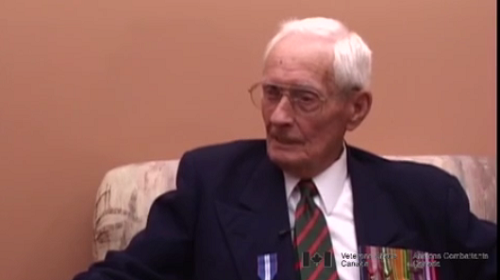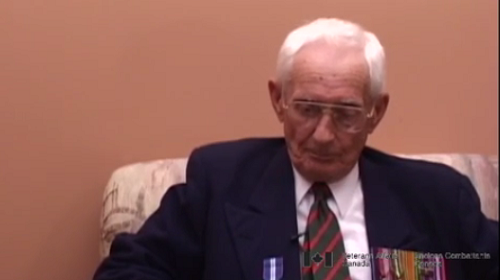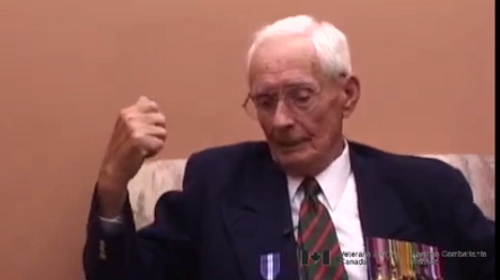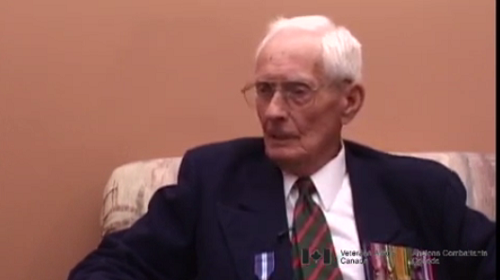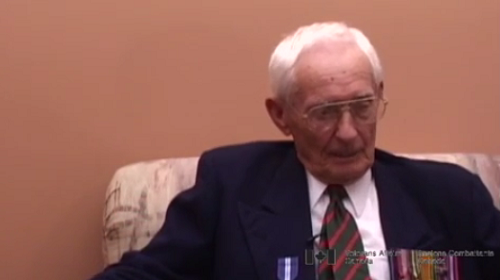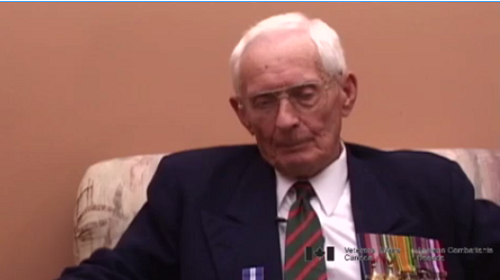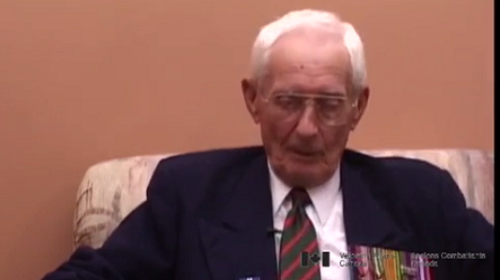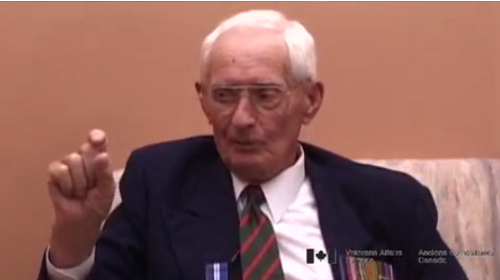Sabotage
Heroes Remember
Sabotage
Transcript
And they drilled dry, no water.
Here you have a hose on the end of the machine and a
little button there and water goes through that drill.
So there’s no dust.
But there we were drilling dry, right in that dry dust.
But we'd watch, have our chance and we would
just take the drill that way and run it in where there was dry dust
and block that hole and that would ruin the drill.
Yeah, well then we'd keep it right in drilling and drilling
until it wouldn't turn anymore.
Well then you couldn't get the drill out of the hole
so you just unhooked the machine out of it.
So when you blasted it, you're doing the drill.
So that was, we'd say “Well I, how many drills did you break today?”
You'd say one or two or whatever and at last we had hardly any drills.
So they wanted to put transformers by this time.
The Americans were reaching Japan now.
It's the last year of the war.
So to get their big transformers,
there's no place on surface cause the Americans were looking for everything,
especially on the island of Kyushu
because that's where, the most industrialized part of Japan.
We make this side tunnel off and we made the blocks.
Our own guys made them on surface.
The fellows that had broken legs or arms,
so they would work on surface.
So they had a mold there
and they'd make these blocks
which would go you put one on the next one.
You would make a complete circle to give it power then.
So we made this big long thing on this ichi (inaudible)
so in the end they had to have air there.
They brought down this big transformer, the Japs did.
Anyway, they put this all set up, and in the end of this, in this,
you know it was about ten feet or nine feet,
went around like that and then square down.
So they put it, made it, had it enclosed in about this far apart,
about two inches with planks all on edge this way
so the air would go through to cool this big machine.
After they got it all set up and on the night shift another guy,
by the name of Davenaugh, and I, we said,
“How can we destroy it? What are we going to do?”
So when I was working at it and they made these big trunnions,
they had the axles about that big and it was brand new, well made.
It looked well made.
Where that run in, it had a square box like the old railway here.
You used to fill it with rags and stuff and oil,
so these trunnions was running that.
So they left boxes of hack saw blades there
and they made a great big, just like an old bicycle lock
and it was about this thick, but it was about this big.
So if you turned it this way, it had a big long link
for to lock this door that they had to go through.
We got on them, when the shift was changing, on the night shift.
We played with the lock and then we found a way to turn the lock
and we could roll it this way and it would pass through that link.
Holy Moses, we said, “We can get in there.” So we did.
In we went and we quickly scooped out all the grease in that trunnion
and with the rags and we filled it with dry dust
and we broke the hack saw blades up
and we put them all in there with it
and put it all back level again and put the lock back.
See, it was locked. Well, well, well.
I don't know if it was the first night or the next when that started to go.
It didn't take long till it heated.
Course there's nobody there to stop it.
It was all automatic.
It just burnt that axle right off.
Yeah, well, but if they'd found out, I don't know what.
I know I wouldn't be here.
So we'd wreck everything we could.
Description
Mr. Ross describes the efforts of the POWs to sabotage equipment in the coal mine at Omini.
Lancelot ‘Lance’ Ross
Mr. Lance Ross was born in Lac-Megantic, Quebec on October 7, 1911. His father was a carpenter and a family farmer. Mr. Ross went to work at the age of fourteen, holding many odd jobs that paid $1.00 to $1.50 a day. Impatient with the wait for joining the air foce, Mr. Ross joined the army and went overseas to Hong Kong. He was captured and spent time in POW camps. During this time, Mr. Ross kept a diary that was used for the prosecution of Japanese war crimes. After the war, he was active in getting recognition for Hong Kong Veterans.
Meta Data
- Medium:
- Video
- Owner:
- Veterans Affairs Canada
- Duration:
- 4:38
- Person Interviewed:
- Lancelot ‘Lance’ Ross
- War, Conflict or Mission:
- Second World War
- Battle/Campaign:
- Hong Kong
- Branch:
- Army
- Units/Ship:
- Royal Rifles of Canada
- Rank:
- Sergeant
- Occupation:
- Platoon Sergeant
Related Videos
- Date modified:



